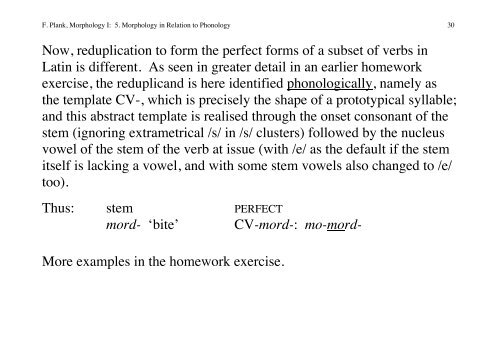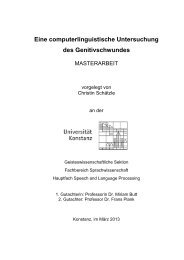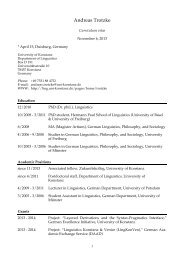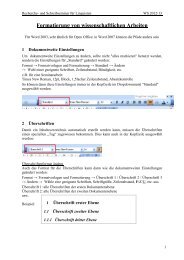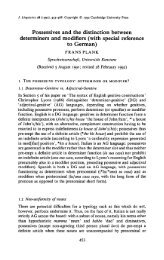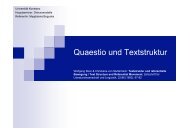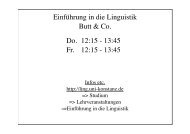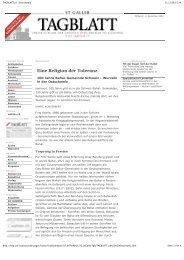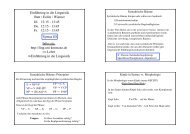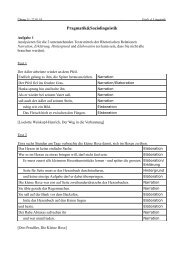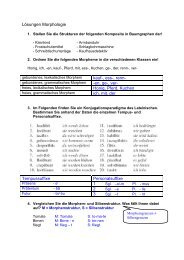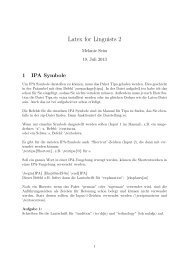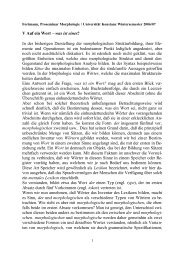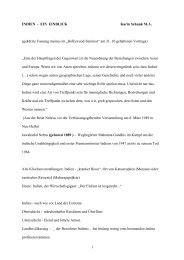5. Morphology in Relation to Phonology
5. Morphology in Relation to Phonology
5. Morphology in Relation to Phonology
Create successful ePaper yourself
Turn your PDF publications into a flip-book with our unique Google optimized e-Paper software.
F. Plank, <strong>Morphology</strong> I: <strong>5.</strong> <strong>Morphology</strong> <strong>in</strong> <strong>Relation</strong> <strong>to</strong> <strong>Phonology</strong> 30<br />
Now, reduplication <strong>to</strong> form the perfect forms of a subset of verbs <strong>in</strong><br />
Lat<strong>in</strong> is different. As seen <strong>in</strong> greater detail <strong>in</strong> an earlier homework<br />
exercise, the reduplicand is here identified phonologically, namely as<br />
the template CV-, which is precisely the shape of a pro<strong>to</strong>typical syllable;<br />
and this abstract template is realised through the onset consonant of the<br />
stem (ignor<strong>in</strong>g extrametrical /s/ <strong>in</strong> /s/ clusters) followed by the nucleus<br />
vowel of the stem of the verb at issue (with /e/ as the default if the stem<br />
itself is lack<strong>in</strong>g a vowel, and with some stem vowels also changed <strong>to</strong> /e/<br />
<strong>to</strong>o).<br />
Thus: stem PERFECT<br />
mord- ‘bite’ CV-mord-: mo-mord-<br />
More examples <strong>in</strong> the homework exercise.


